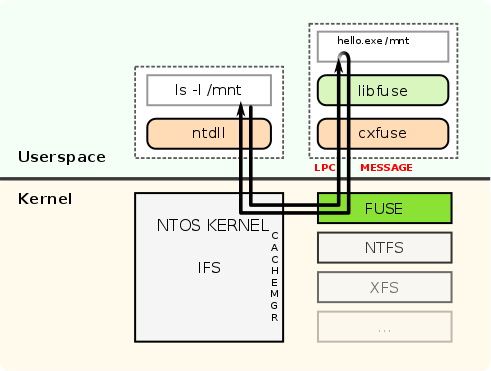Windows Fuse Ssh
However a file system developer could use it to quickly develop a new file system on Windows that could be very useful to you. For example, if you have access to a computer running SFTP, you can now use SSHFS to mount that computer's file system as a new drive. Download SSHFS-Win Manager - Improve the way you handle your SSH connections by relying on this Electron-based, modern-looking, and user-friendly client for SSHFS-Win. The first time you map a particular SSHFS path you will be prompted for the SSH username and password which can be saved using the Windows Credential Manager so that you don’t get prompted for it again. In order to unmap the drive, right-click on the drive icon in Windows Explorer and select Disconnect. For Windows platform, there are couples of implementations both in commercial sector and open source community. This guide describes an open source version known as SSHFS-Win. It is free and can be downloaded here.
Ssh Client For Windows Download
Mounting an SSHFS network, the sign-on displays the desktop icon illustrated | |
| Developer(s) | Nikolaus Rath, Miklos Szeredi [1] |
|---|---|
| Stable release | |
| Repository | |
| Operating system | UNIX-like |
| Type | Remote access |
| Website | https://github.com/libfuse/sshfs |

In computing, SSHFS (SSH Filesystem) is a filesystem client to mount and interact with directories and files located on a remote server or workstation over a normal ssh connection.[3] The client interacts with the remote file system via the SSH File Transfer Protocol (SFTP),[4] a network protocol providing file access, file transfer, and file management functionality over any reliable data stream that was designed as an extension of the Secure Shell protocol (SSH) version 2.0.
The current implementation of SSHFS using FUSE is a rewrite of an earlier version. The rewrite was done by Miklos Szeredi, who also wrote FUSE.[5]

Features[edit]
SFTP provides secure file transfer from a remote file system. While SFTP clients can transfer files and directories, they cannot mount the server's file system into the local directory tree. Using SSHFS, a remote file system may be treated in the same way as other volumes (such as hard drives or removable media).[6]

Using the Unix commandls with sshfs will sometimes not list the owner of a file correctly, although it is possible to map them manually.[7][8]
For distributed remote file systems with multiple users, protocols such as Apple Filing Protocol, Network File System and Server Message Block are more often used. SSHFS is an alternative to those protocols only in situations where users are confident that files and directories will not be targeted for writing by another user, at the same time.[citation needed]
The advantage of SSHFS when compared to other network file system protocols is that, given that a user already has SSH access to a host, it does not require any additional configuration work, or the opening of additional entry ports in a firewall.[5]
See also[edit]
- Files transferred over shell protocol (FISH)
- FileZilla, a free software utility for multiple platforms.
- SSH file transfer protocol (SFTP)
- Secure copy (SCP)
References[edit]
- ^'SSHFS Contributors at Github.com'.
- ^ ab'Releases · libfuse/sshfs · GitHub'. GitHub. Retrieved 23 February 2020.
- ^'sysutils/sshfs-fuse: sshfs-fuse-2.4p1 – mount remote directories over ssh'. OpenBSD ports. 15 June 2013. Retrieved 10 February 2015.
- ^'SSHFS security'. Retrieved 26 February 2010.
- ^ ab'SSHFS homepage'. Retrieved 15 March 2012.
- ^'About SSHFS'.
- ^Canonical Ltd. (May 2009). 'SSHFS - Community Ubuntu Documentation'. Retrieved 5 June 2009.
- ^Szeredi, Miklos (November 2008). 'SSHFS FAQ: What options does sshfs support?'. Archived from the original on 18 April 2009. Retrieved 5 June 2009.
External links[edit]
Windows Fuse Sshfs
Windows Fuse Ssh Server

Ssh Keys Windows
